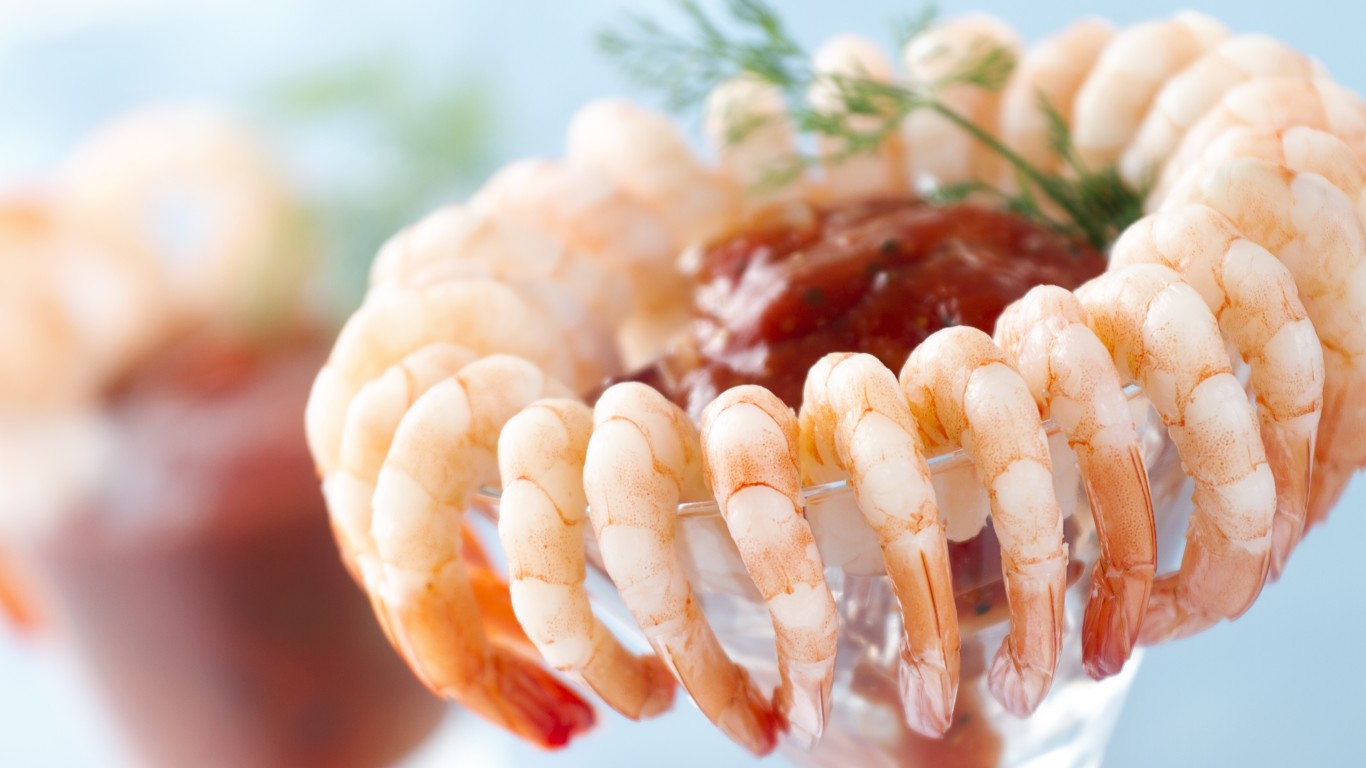
The idea of eating something small or light to begin a meal may have started centuries ago in China and become widespread in Europe by way of Russia, probably migrating to the United States with British settlers.
Such preliminary dishes are known to us today primarily under two names: appetizers and hors d’oeuvres. The first term suggests the stimulation of the appetite. The French synonym is “apéritif,” from the Latin “aperire” — to open — meaning that they don’t so much stimulate as “open” the appetite for other fare to come. (Confusingly for Americans, the French also call appetizers “entrées,” or “entries” — a word we have, for some reason, adopted to mean not the first course but the main one.)
“Hors d’oeuvre” is French for “outside the work,” the work being the centerpiece of the dinner. (The French never pluralize the term; “outside the works” wouldn’t make sense in the context.)
Food goes in and out of fashion, of course, and many appetizers — or hors d’oeuvres — that were ubiquitous in the 20th century, whether at parties, at home dinner tables, or in restaurants, have fallen out of favor. (Here are some examples of food fads from the decade you were born.)
Today’s menus might offer such “entries” as grilled octopus, burrata with some accompaniment, or carpaccio of one kind of meat, seafood, or vegetable or another.
In the 1960s, in contrast, those items would have been unknown and choices might have included artichokes vinaigrette, oysters Rockefeller, or French onion soup, dishes now considered almost museum pieces. (Menus aren’t the only things that evolve.
24/7 Tempo has searched cookbooks and restaurant menus from the previous century to compile a list of once-favored first courses that are seldom seen these days, but that deserve classic status and can still bring great pleasure to our palates.
Click here to see old-school appetizers that are classics for a reason
The choices include both the kinds of snacks likely to be served at cocktail hour and more substantial dishes that are best eaten seated at the dinner table in preparation for the feast to come.
Rumaki
No ersatz luau in mid-20th-century America was worthy of the name without trays of this tiki culture hors d’oeuvre — pieces of chicken liver and water chestnut, wrapped in bacon, glazed in sweetened soy sauce, and skewered on toothpicks.
[in-text-ad]
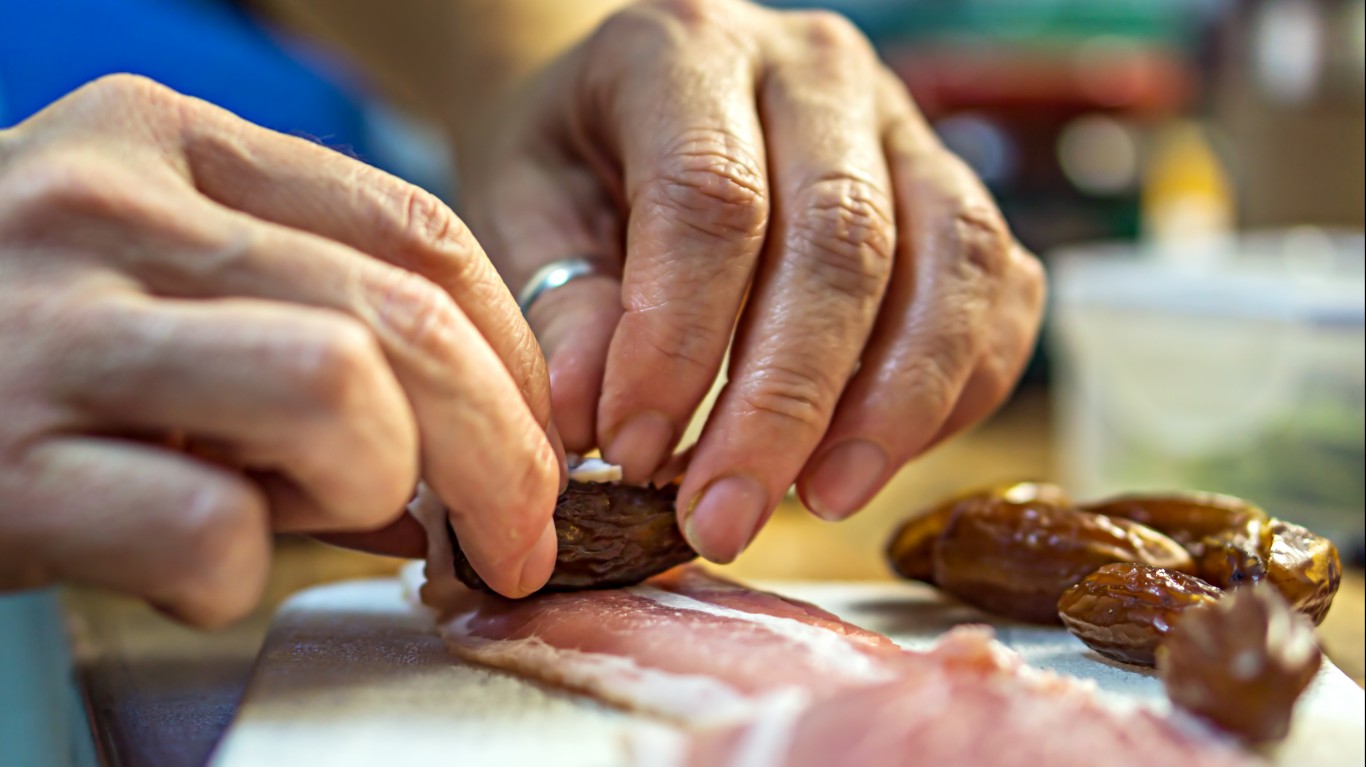
Bacon-wrapped dates
A rumaki variant, perhaps invented for snackers squeamish about chicken liver, these are dates, often stuffed with blue cheese or goat cheese, then wrapped in bacon which is then crisped up. They’re a variation on a British appetizer called “devils on horseback,” in which the fruit was originally prunes instead of dates.

Pigs in a blanket
This irresistible hors d’oeuvre is simply Vienna Sausages or short lengths of hot dog wrapped in biscuit or croissant dough, typically served with mustard on the side.

Pinwheels
Pinwheels in the culinary sense are bite- or two-bite-sized cross-sections of rolled up wraps, flour tortillas, even (for a carb-free variation) luncheon meats. The variations are endless. Fillings might include bacon, sliced cheddar, and jalapeños; salami and provolone; turkey, cream cheese, and chopped black olives; chicken Caesar salad; ham and pimento cheese… If you can put it in a sandwich, you can probably put it in a pinwheel.
[in-text-ad-2]
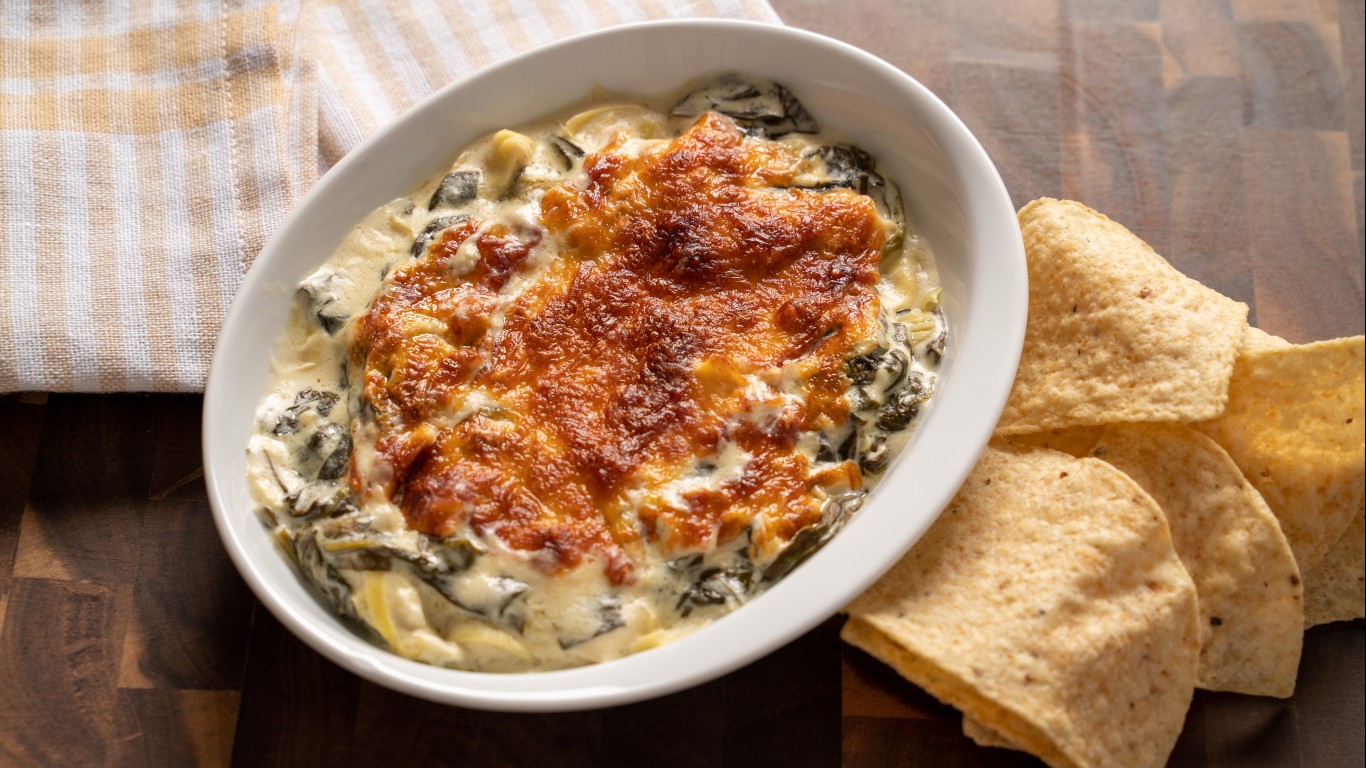
Spinach artichoke dip
Cooked spinach and chopped artichoke hearts mixed with mayonnaise, cream cheese, and/or sour cream, seasoned, and served with crackers or chips (tortilla or potato) for dipping, this appetizer was once popular party fare, and can still be found on some (but not enough) restaurant menus.
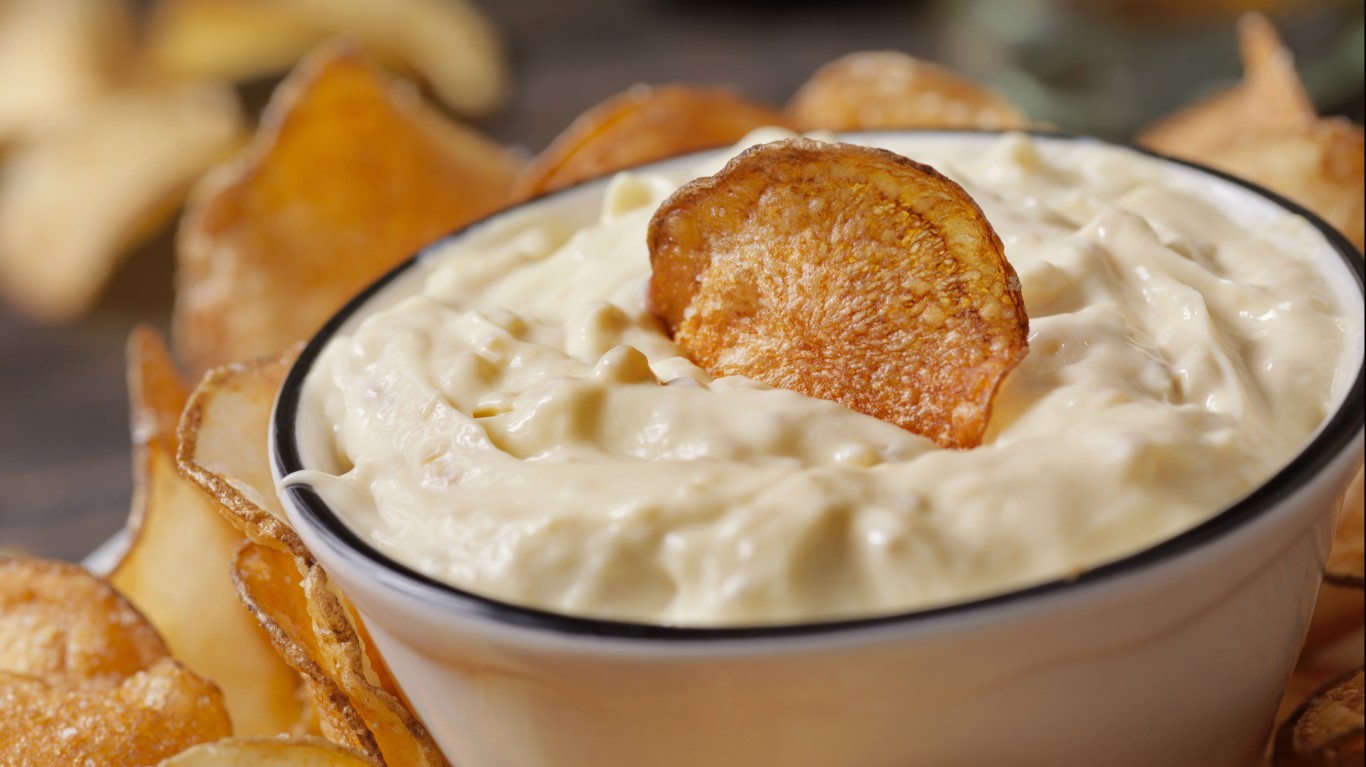
French onion dip
There’s not much French about this dip. Said to have been invented in Los Angeles in 1954, it’s a blend of instant French onion soup mix and sour cream, popularized by the Lipton Soup company — which happened to make said mix. Crackers, chips, or raw vegetables for dipping should be served with it.
[in-text-ad]
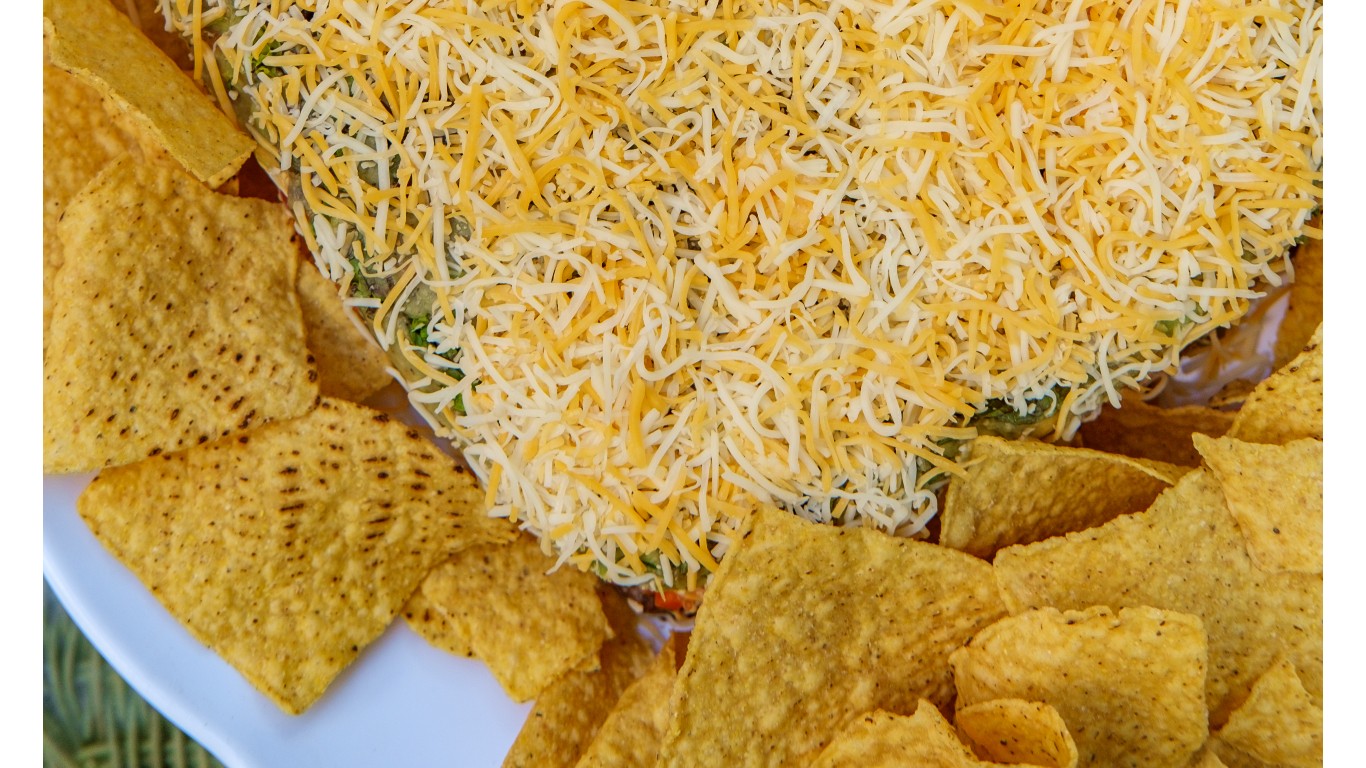
Seven-layer bean dip
A Texan contribution to the appetizer menu, this elaborate concoction became popular nationwide in the 1980s. The particulars can vary, but the layers (in no particular order) are typically refried beans, guacamole, black olives, shredded cheese, sour cream, salsa, and shredded lettuce. The dip is scooped up with tortilla chips.
Cheese straws
A dough made with flour, butter, shredded cheese, and seasonings, formed into sticks or twirls and baked, these were a favorite in the U.K. as well as the U.S. and are still a great party snack or accompaniment to a glass of good red wine.
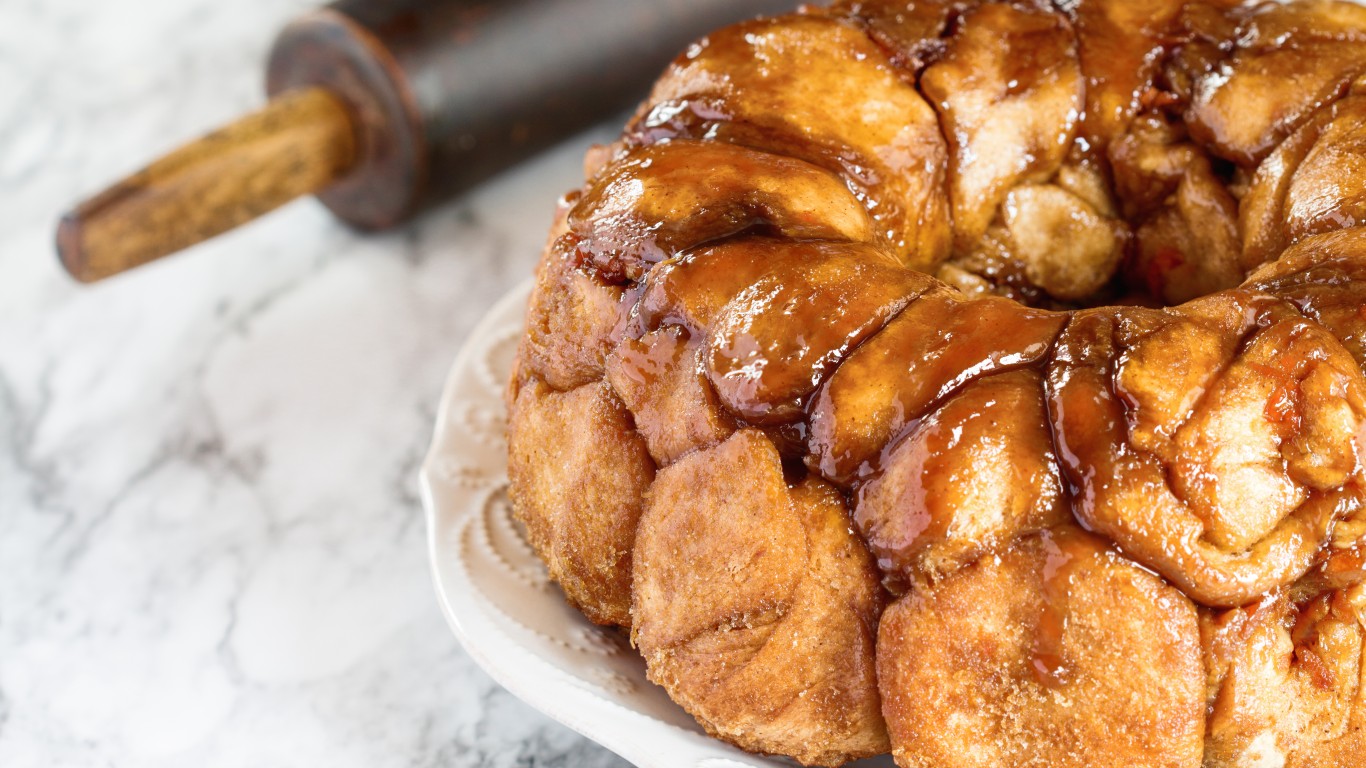
Monkey bread
A soft pull-apart bread, usually flavored with cinnamon and slightly crisp on the outside (though sometimes just buttery and savory), this mid-20th-century party fad food is based on an old Hungarian specialty.
[in-text-ad-2]

Baked brie
A whole wheel of soft-ripe brie cheese enrobed in dough (typically puff pastry) and baked so that the cheese melts a bit, this hors d’oeuvre still shows up at parties sometimes, usually served with some kind of preserves on the side. Guests cut it into wedges themselves.
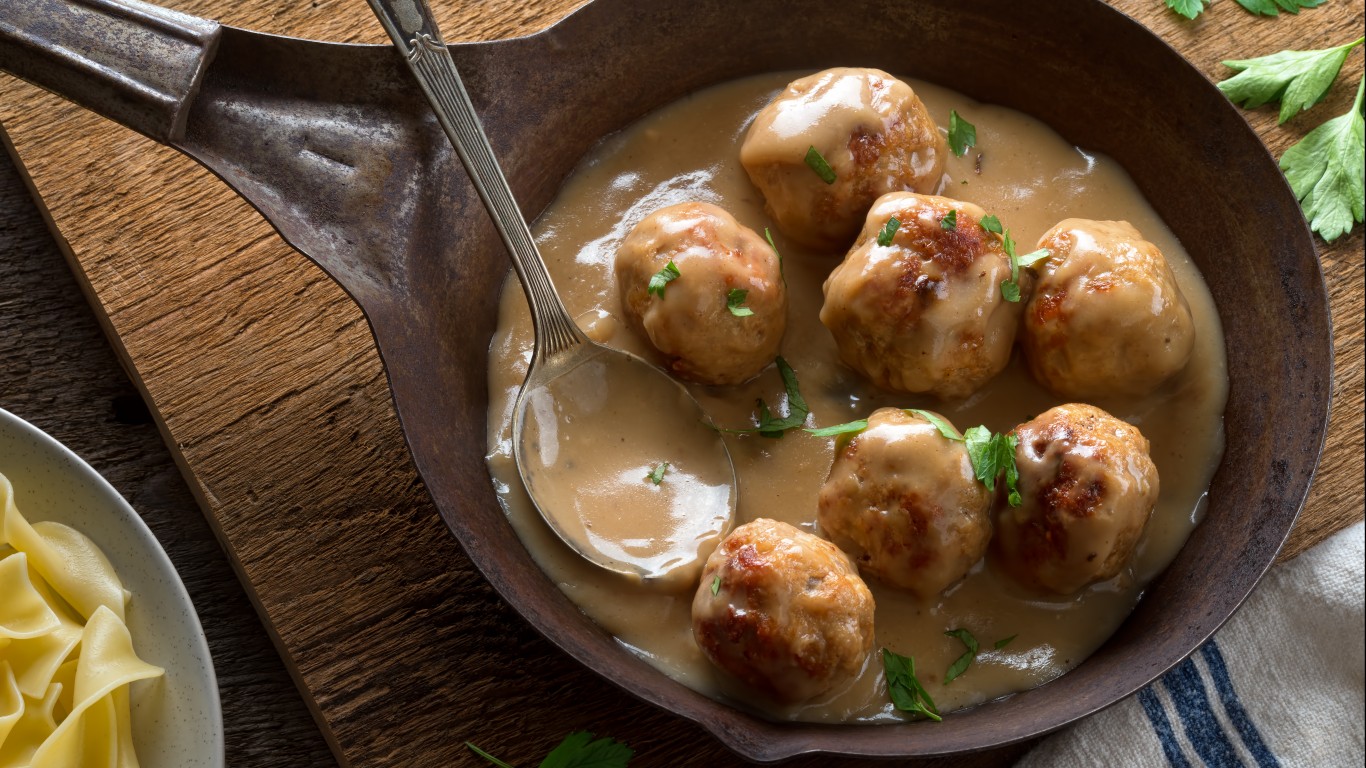
Swedish meatballs
Bite-size meatballs, made with ground beef, veal, or pork, or some combination of them, these little Scandinavian treats are cloaked in cream sauce. While they may be served as a main dish with such accompaniments as boiled or mashed potatoes, lingonberry preserves, and/or thin-sliced cucumber, as an hors d’oeuvre they’re speared with toothpicks for easy eating.
[in-text-ad]

Stuffed mushrooms
The undersides of large mushrooms of various kinds, with the stems removed, form a perfect small “bowl” for different kinds of filling — loose-cooked sausage or other ground meat, cheese, seasoned breadcrumbs, egg salad, and more.
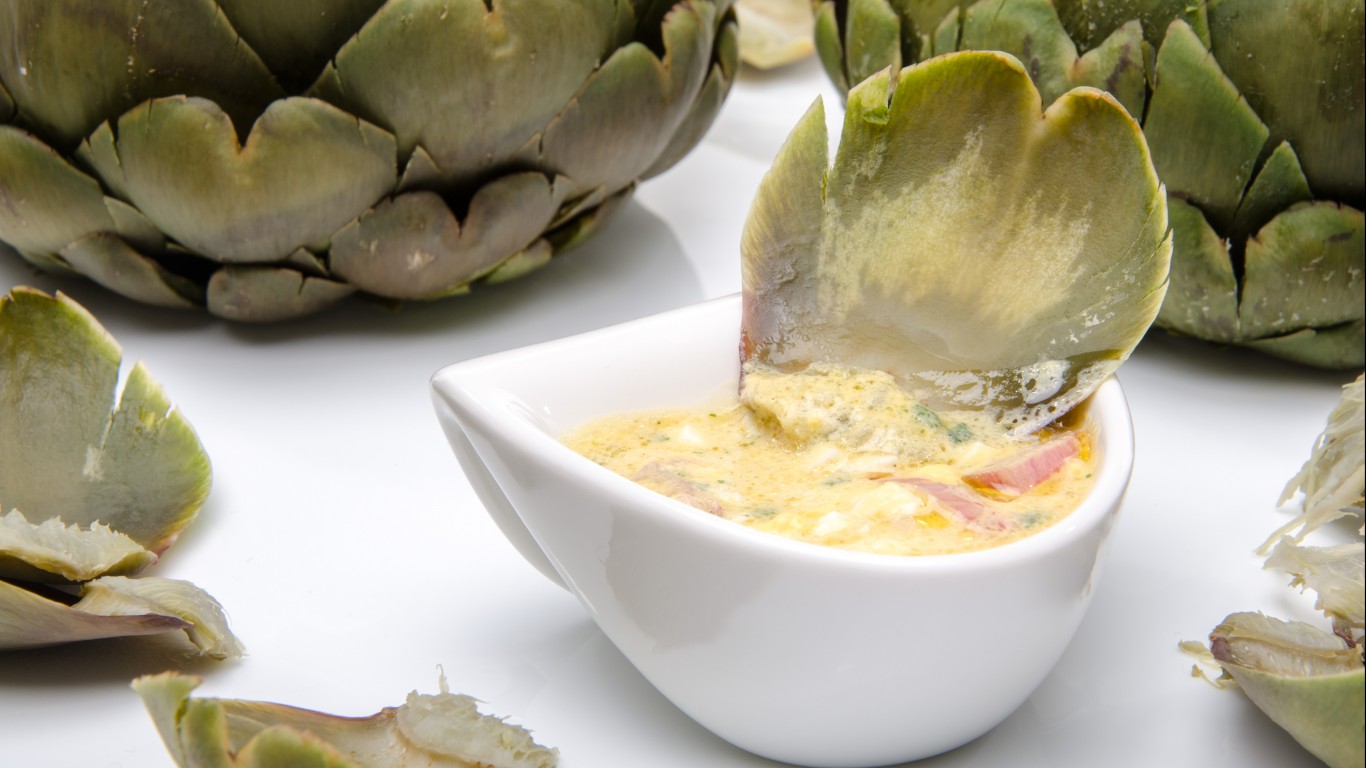
Artichokes vinaigrette
Once considered the height of sophisticated finger food, these are whole steamed or boiled artichokes served with vinaigrette on the side. Diners pluck the vegetable’s leaves one at a time, dip them in the dressing, then scrape the thin layer of flesh off each one with their teeth, discarding the fibrous remains.

Shrimp cocktail
Shrimp cocktail was probably first developed in England, but for several decades in the middle of the last century, it was hard to find a menu at any upscale American or “continental” restaurant in this country that didn’t offer this dish (also known as a prawn cocktail) as an appetizer. It is nothing more than cooked, shelled giant shrimp served with tomato-based cocktail sauce. The standard presentation called for the shrimp to be positioned with their tails hanging out of a large cocktail glass.
[in-text-ad-2]
Crab Louis
Once known as “the King of Salads,” this San Francisco creation from the early 20th century combines crabmeat, hard-boiled eggs, asparagus, and tomato wedges over iceberg lettuce with Louis dressing — a blend of chili sauce and mayonnaise with grated onion and cayenne.
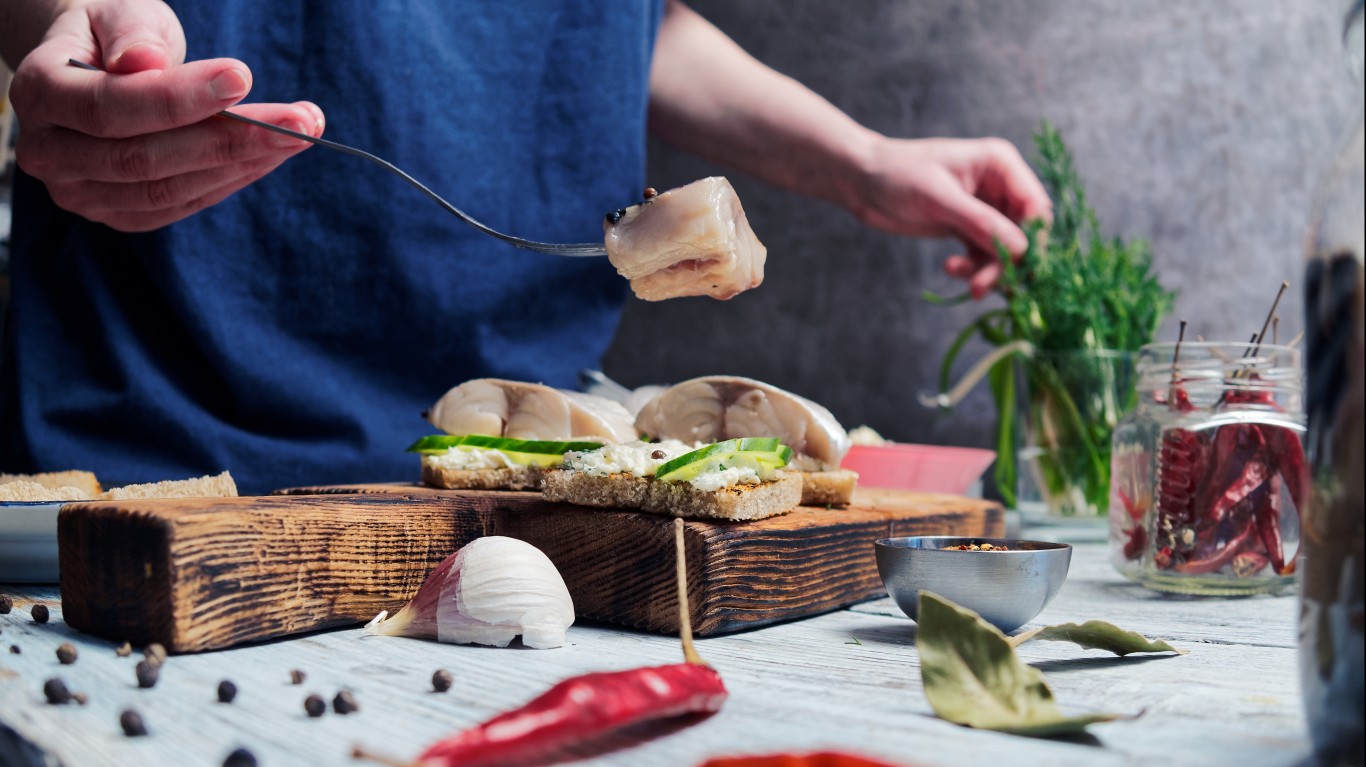
Marinated herring
These days, marinated (or pickled) herring — in which fillets of the tasty if oily little fish are preserved in vinegar with spices — is found mostly in Jewish delis and Scandinavian restaurants. There was a time, though, when it was commonly offered on menus at a wide range of places, either on a plate with potato or cucumber salad or by itself, with just rye bread or some Nordic flatbread as accompaniment.
[in-text-ad]
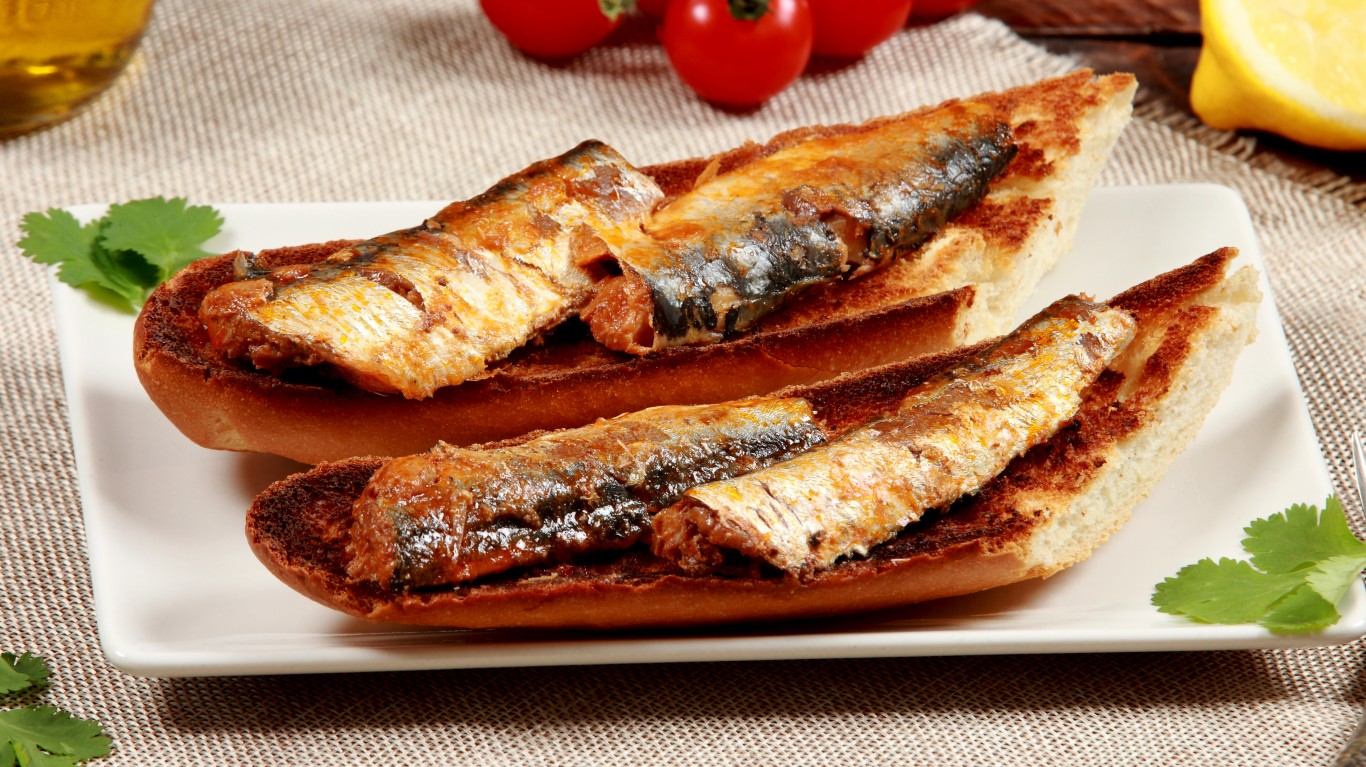
Sardines on toast
These days, pricey canned Spanish sardines and other oil-packed fish are a trendy gourmet treat, but there’s nothing wrong with this vintage appetizer — just good toasted bread with a few glistening little everyday sardines laid across it, maybe seasoned with a few drops of lemon juice and some cracked black pepper.
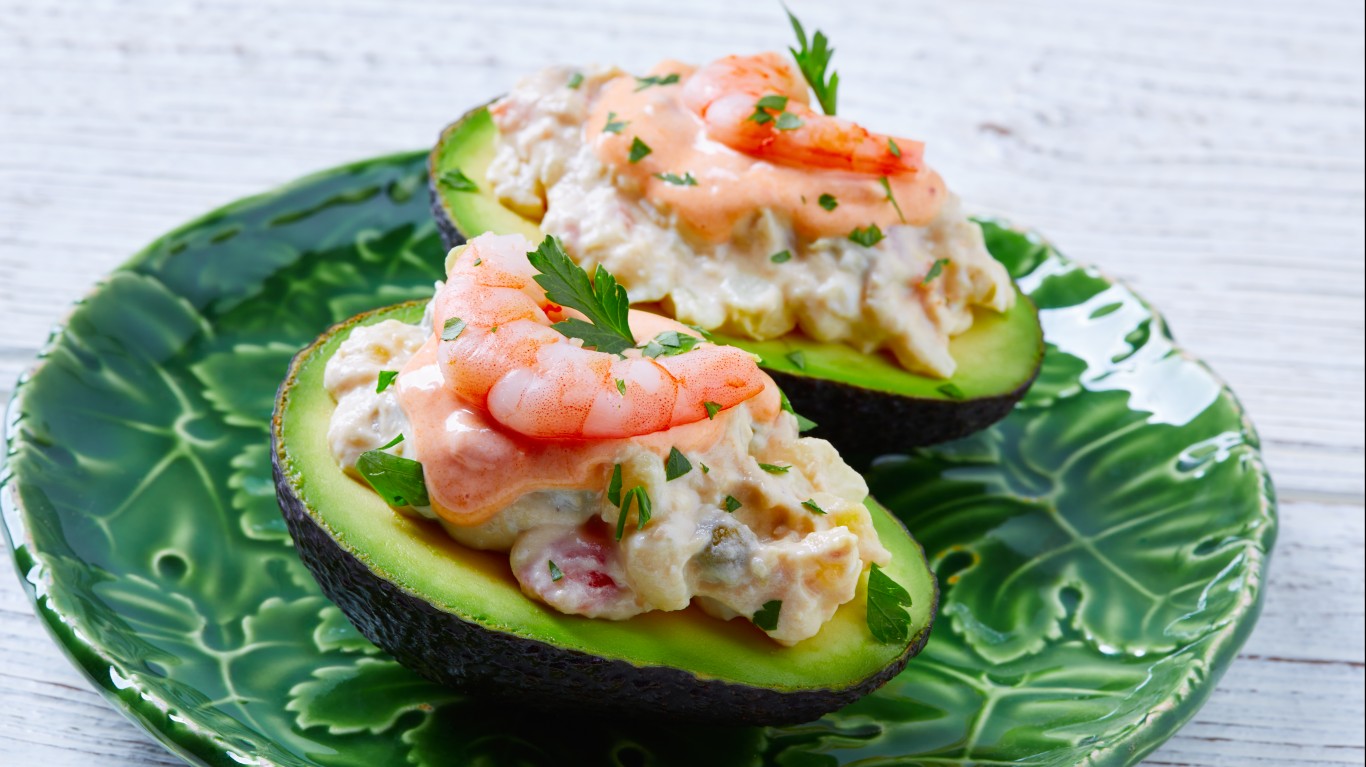
Shrimp-stuffed avocado
A halved avocado with the pit removed makes a perfect edible receptacle for a salad of baby shrimp with mayonnaise.
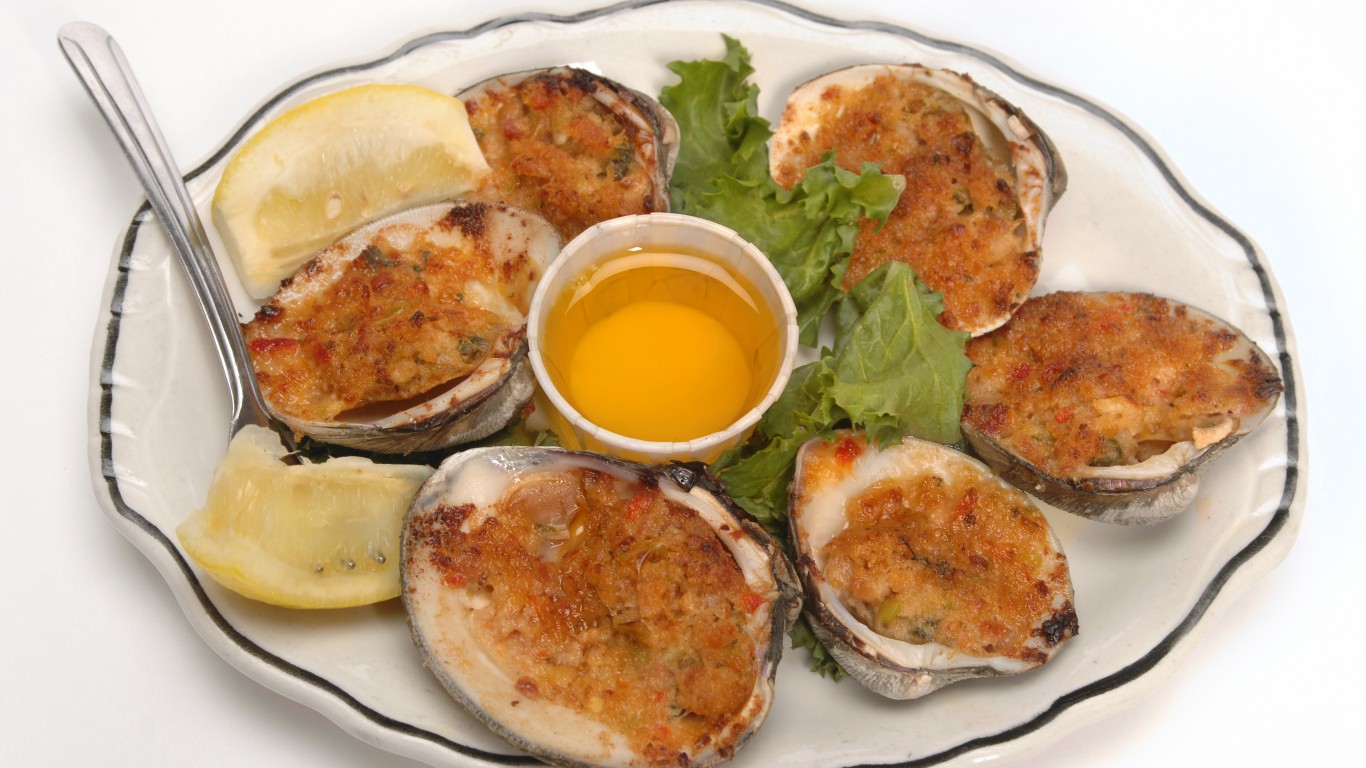
Clams casino
This New England invention, probably from Rhode Island originally, consists of clams on the half shell topped with bread crumbs and finely chopped bacon and quickly gratinéed under a broiler.
[in-text-ad-2]
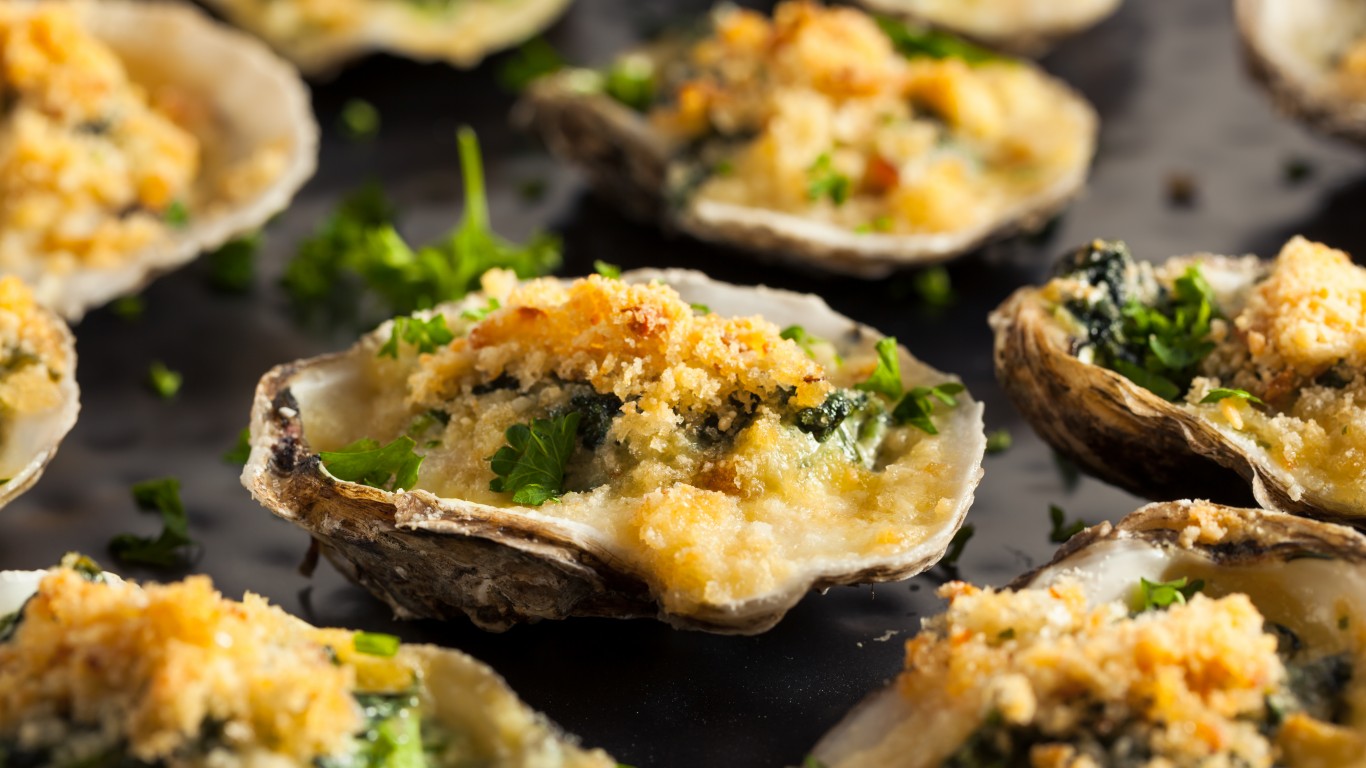
Oysters Rockefeller
Created in 1889 at the celebrated Antoine’s restaurant in New Orleans and named for John D. Rockefeller — the richest man in America at the time — this is a presentation of oysters on the half shell cloaked in a rich butter sauce turned green with spinach and/or parsley or other green herbs, then topped with bread crumbs and baked.
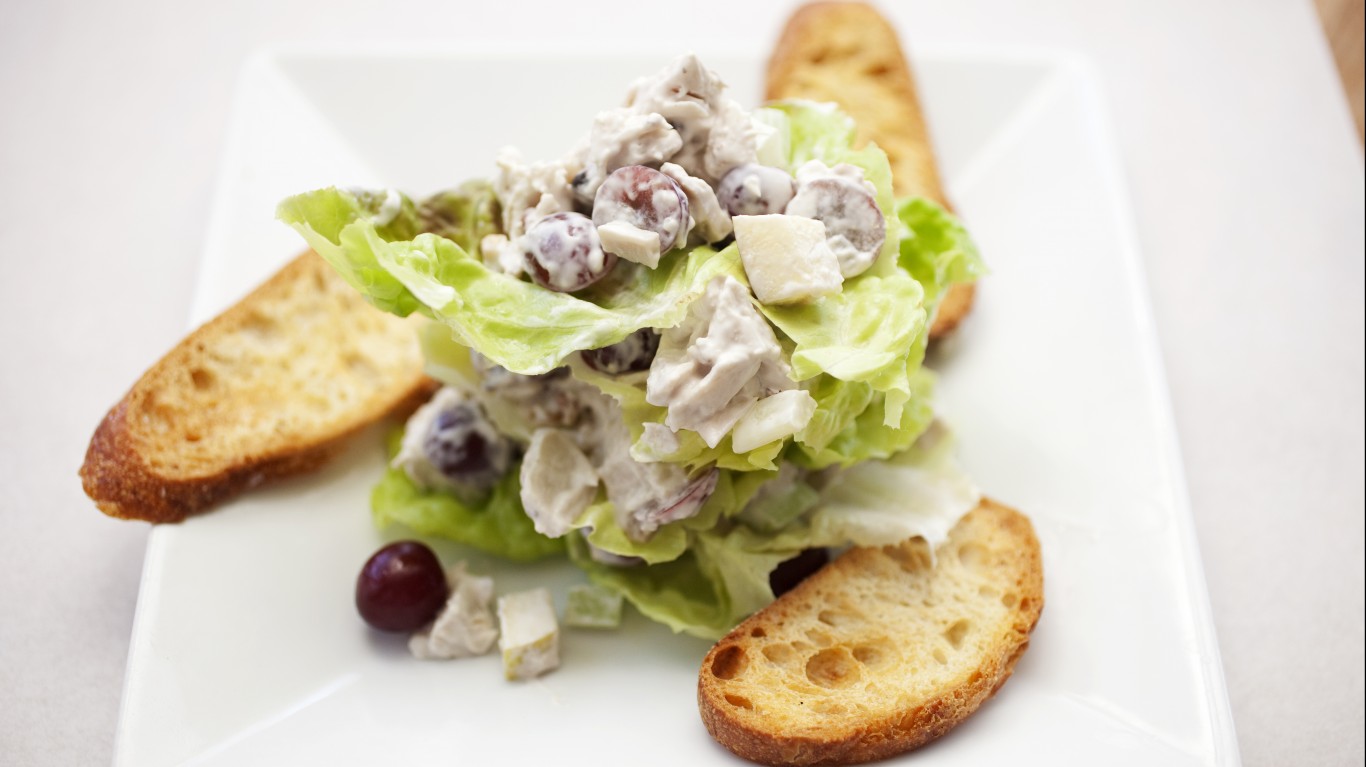
Waldorf salad
A one-time essential on restaurant and tearoom menus across the country, this is a salad of apples, grapes, celery, and walnuts in a mayonnaise dressing. It was invented at, and named for, New York City’s famed Waldorf-Astoria Hotel.
[in-text-ad]

French onion soup
In Paris, this soup of caramelized onions in beef broth, topped with croutons and melted cheese (usually gruyère), was once early-morning fare for workers in the city’s all-night food markets. It appeared in America as early as 1861, but didn’t become a standby at French — and other — restaurants in this country until the 1950s.
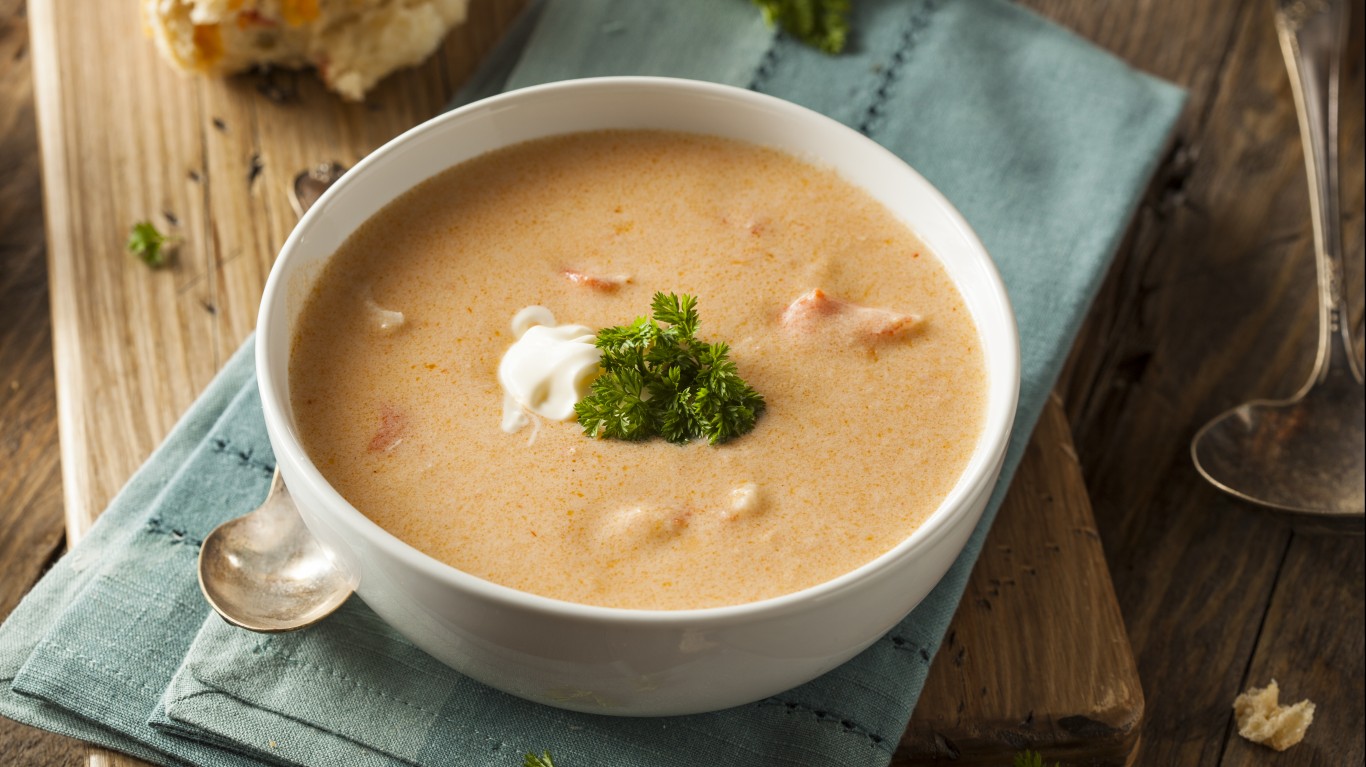
Lobster bisque
A rich, creamy soup traditionally thickened with rice or rice starch and sometimes spiked with sherry, lobster bisque was once a popular soup on the menus at traditional French and American restaurants around the country. Some authorities recommend ordering it only at restaurants that serve a lot of lobster, as that would suggest that the soup is based on stock made from fresh lobster shells and not from a packaged mix.
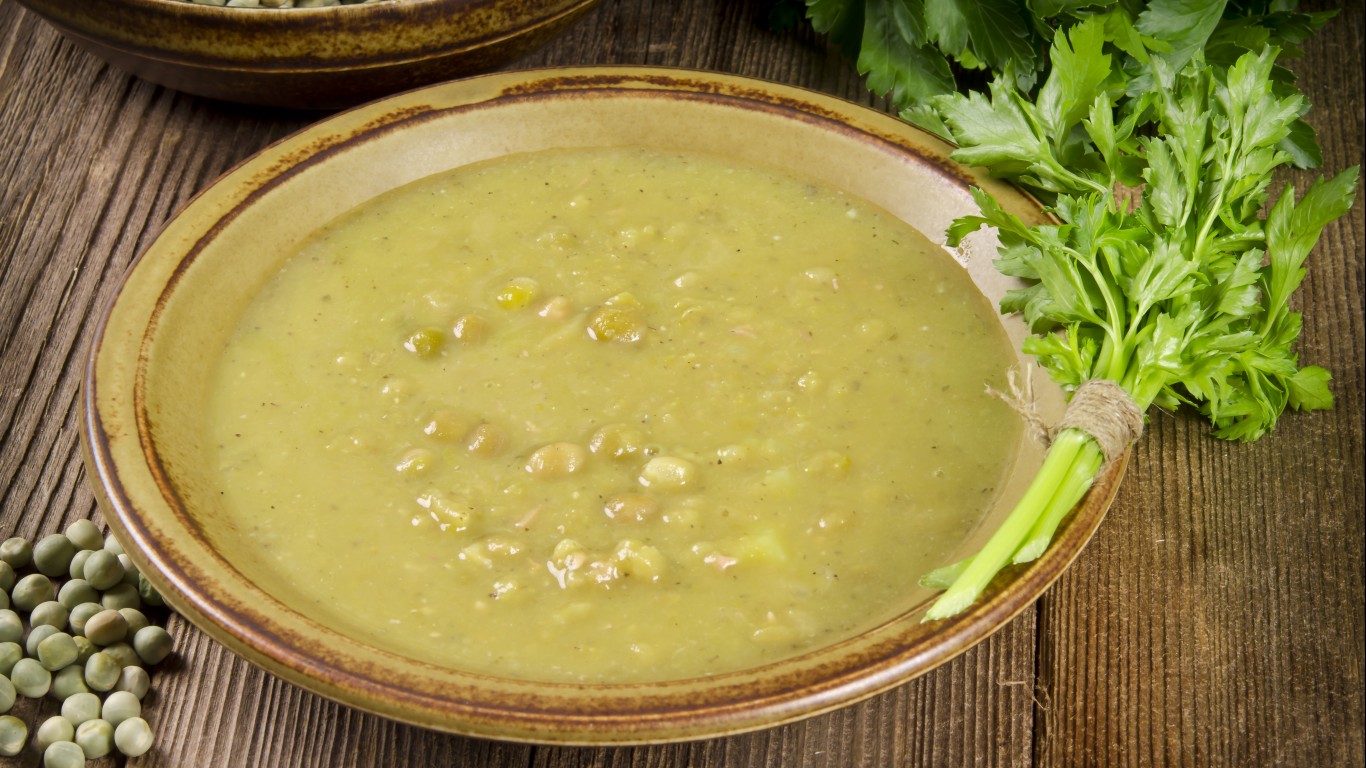
Split pea soup
This thick, murky soup of puréed dried split peas, often flavored with ham hocks and usually yellow or greenish in color, is served with slight variations in many parts of Europe, as well as Canada, Australia, and at least sometimes still in the U.S. A canned version, marketed by a restaurant called Pea Soup Andersen’s in Buellton, in California’s Santa Barbara County, is sold in grocery stores around the country.
It’s Your Money, Your Future—Own It (sponsor)
Are you ahead, or behind on retirement? For families with more than $500,000 saved for retirement, finding a financial advisor who puts your interest first can be the difference, and today it’s easier than ever. SmartAsset’s free tool matches you with up to three fiduciary financial advisors who serve your area in minutes. Each advisor has been carefully vetted and must act in your best interests. Start your search now.
If you’ve saved and built a substantial nest egg for you and your family, don’t delay; get started right here and help your retirement dreams become a retirement reality.
Thank you for reading! Have some feedback for us?
Contact the 24/7 Wall St. editorial team.
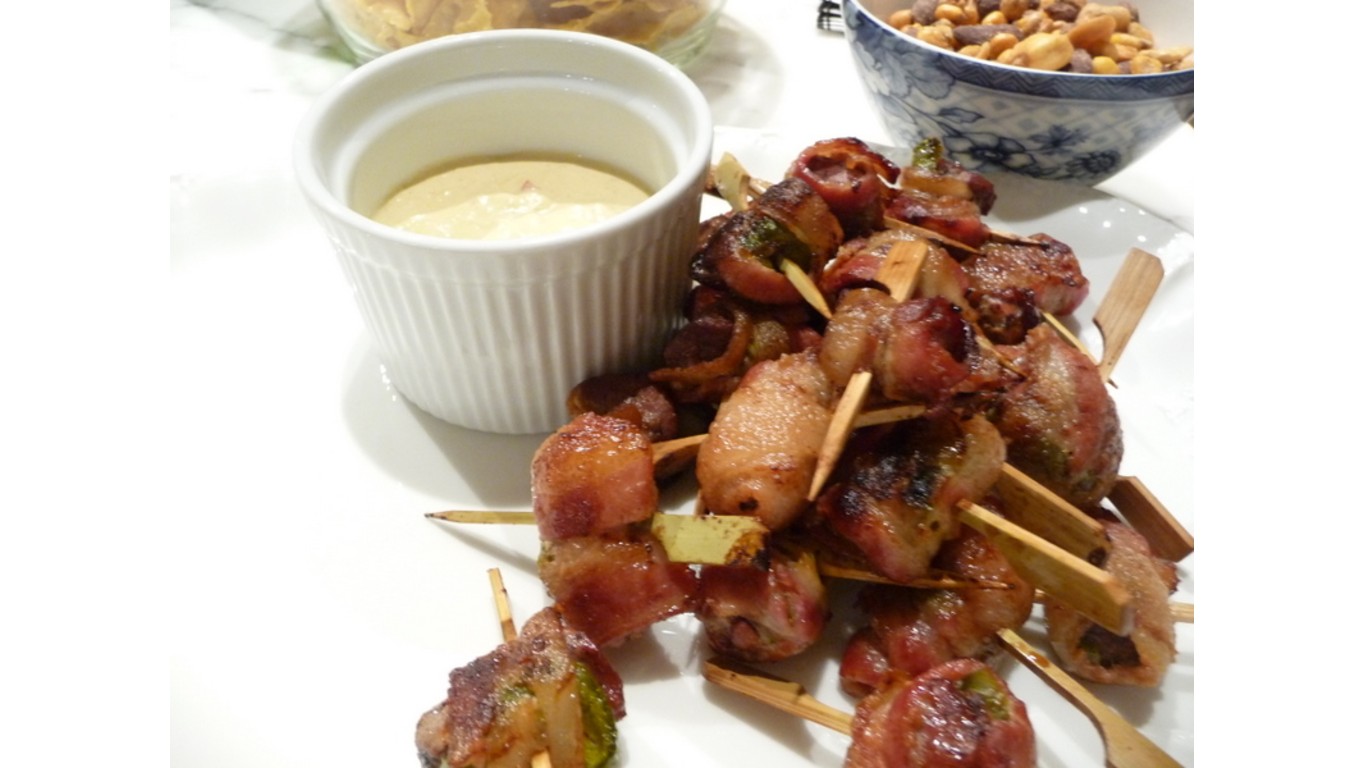
 24/7 Wall St.
24/7 Wall St. 24/7 Wall St.
24/7 Wall St.
 24/7 Wall St.
24/7 Wall St.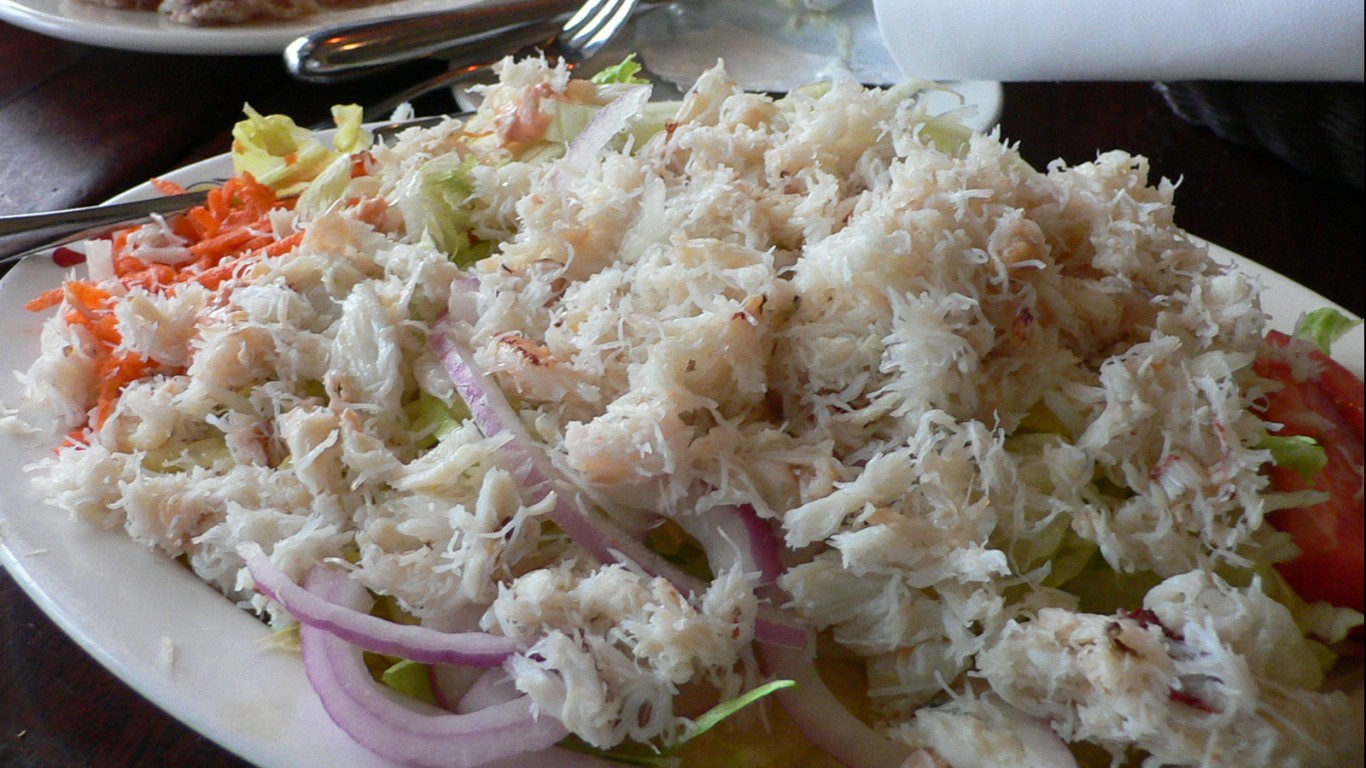
 24/7 Wall St.
24/7 Wall St.

